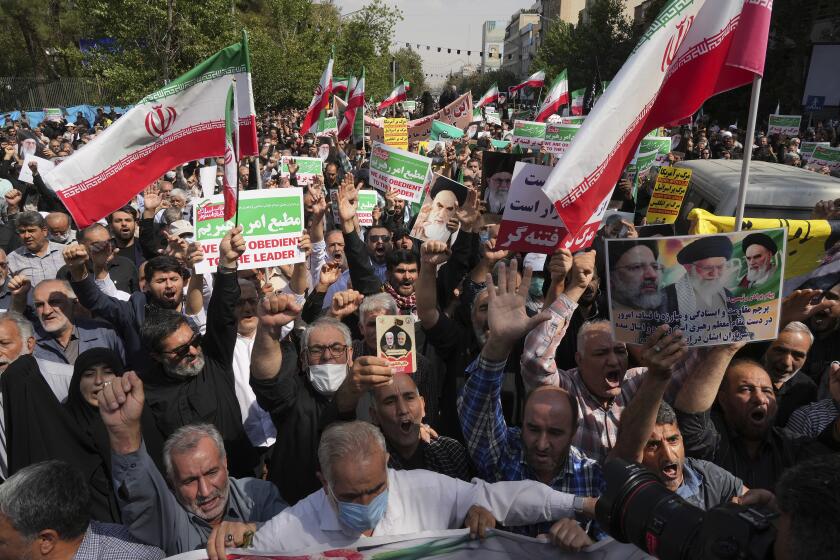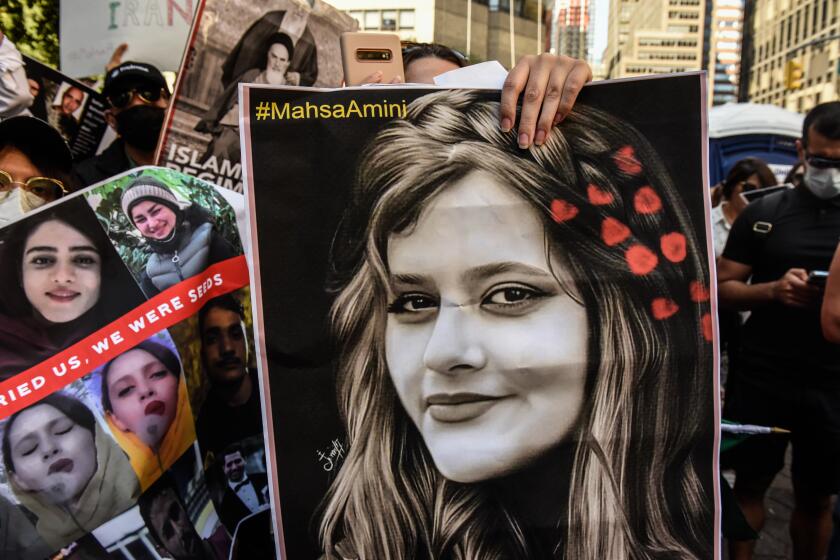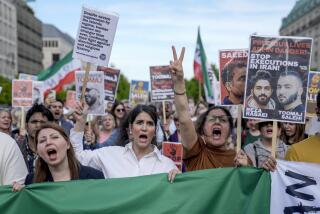Hundreds in Sherman Oaks protest the death of Iranian woman who was in police custody
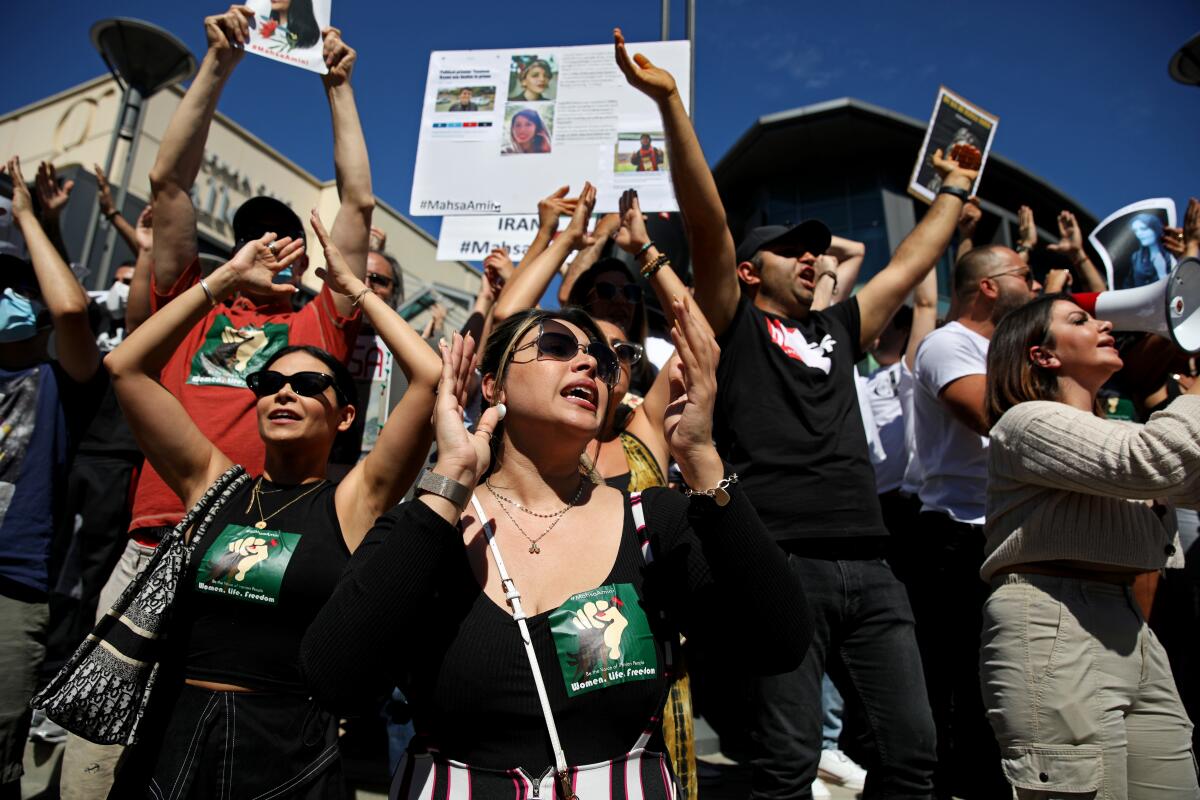
- Share via
Hundreds of protesters gathered Sunday at the Sherman Oaks Galleria in remembrance of 22-year-old Mahsa Amini, whose death while in the custody of Iran’s morality police has sparked a global outcry over the state of women’s rights in that nation.
The crowd at the intersection of Ventura and Sepulveda boulevards braved 95-degree heat, waving Iranian flags and homemade signs denouncing the Iranian government. In both English and Farsi, they chanted “Freedom for Iran” and “Say her name.”
The crowd included Iranian American Helen Zad, who fought back tears as she recalled memories of “persecution and cruelty” by the Iranian government.
The 41-year-old healthcare entrepreneur and podcaster said Amini’s story resonated with her. She had her own encounter with the morality police in 2018, when she was visiting family in Tehran. Zad was wearing a yellow head scarf when officers detained her, she said.
“They said yellow did not show enough respect,” Zad said, adding that they tried to grab her and place her in a van.
Protests spread to L.A. on Wednesday over Mahsa Amini’s death in Iranian morality police custody after she was accused of improperly covering her hair.
Zad, who emigrated from Iran when she was 17, showed officials her U.S. passport and informed them of her citizenship, she said, and they let her go soon after. It was the last time she visited Iran.
“The Iranian government always talks about respect, but they don’t respect women. They want to treat them like animals,” she said.
Medhi Keshavarz, 76, carried a black bullhorn that he used to chant “Freedom for Iran.” Keshavarz was born in Gorgan, near the Caspian Sea, and emigrated to the United States in 1976.
“We need a democratic revolution that gives the Iranian people a chance to choose their government,” he said. “This should be a government not chosen by the West or by mullahs, but by the citizens.”
Mass protests have erupted in Iran over the death of a young woman in custody, but a sustained and lethal government crackdown could be the result.
Keshavarz, who had also protested Friday in Irvine, said he felt solidarity with those in attendance.
“This march is for the women of Iran. And if you look in Tehran, here or Irvine, it’s women protesters leading and saying they’re tired of being treated like half a person,” he said. “As a man, I’m here to give my support to these brave women.”
A similar protest took place Sunday in San Francisco, with crowds marching across the Golden State Bridge. Many of the women demonstrators chanted “We would like freedom,” as passing cars honked in support.
The protests are part of a series of worldwide demonstrations sparked by Amini’s death this month.
Amini was arrested Sept. 13 in Tehran by the morality police, who are tasked with enforcing the laws on Islamic dress code in public. She was accused of not properly wearing her hijab — a head covering that has been mandatory in Iran since the 1979 revolution. She died three days later.
In an interview with BBC Persian, Amini’s father said witnesses alleged that she was beaten while in police custody. He accused the government of lying and trying to cover up her death.
Police have denied that Amini was mistreated and say she died of a heart attack; her family has said she was healthy and did not have a heart condition, news outlets have reported.
News of her death sparked protests in numerous Iranian cities. Videos on social media have shown women burning their head scarves and cutting their hair in defiance of the strict dress codes. Other videos have shown crowds on the street chanting “Death to the dictator” and “Freedom, freedom, freedom.”
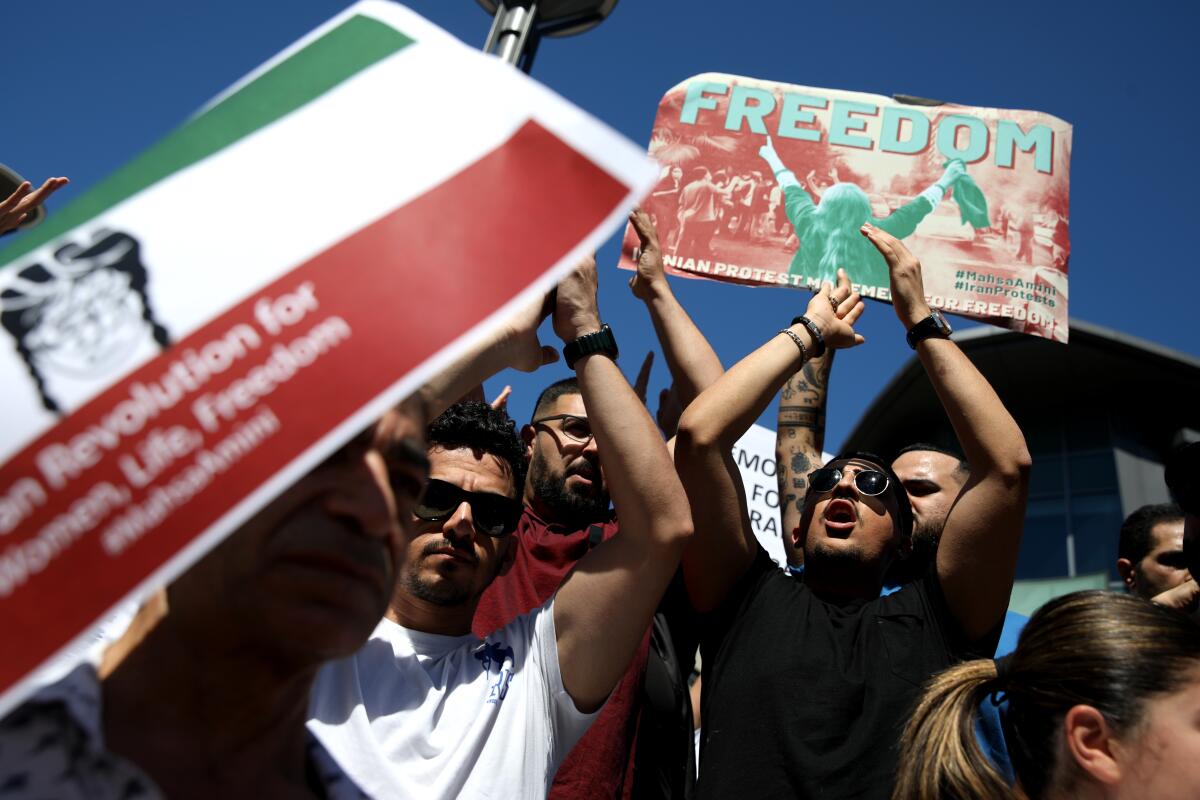
Independent experts with the United Nations Human Rights Council said the protests have been met with excessive use of force by Iranian security teams, including the firing of birdshot and other metal pellets. Dozens of people have been injured and arrested, the U.N. body said, and at least eight have been killed, including a woman and a 16-year-old.
The Iranian government said 17 people, including two security officers, had been killed since the unrest began, according to news reports. At least two female journalists involved in publishing the story of Amini’s death have been arrested by the Iranian police, according to PressGazette, a London-based outlet.
The U.S. Department of the Treasury said the Iranian government has cut off Internet access to its 80 million citizens. Social media and messaging platforms such as Instagram and WhatsApp are largely blocked.
The U.S. government last week imposed sanctions on Iran’s morality police and seven senior security officials.
Protests continued in Iran and elsewhere after a 22-year-old Iranian woman who was accused of not wearing her hijab properly died in police custody.
Los Angeles is home to the most people of Iranian descent outside Iran. As of 2019, there were 87,000 people of Iranian ancestry in the city, according to the U.S. Census Bureau. Many live in what’s known as Tehrangeles, an enclave in Westwood that formed in the 1960s and boomed after the 1979 revolution.
Many in the community have been taking to the streets of L.A. in solidarity with protests around the world against Amini’s death.
Standing next to Zad on Sunday was her sister Nogol, 38, who said a new form of government is needed in Iran.
“They can’t just say, ‘Now you can take off your scarves and hijabs, and it’s OK,’” she said. “The only change is with them gone.”
She said Iranians back home and in the U.S. would not be silenced. She called on feminists around the world, including Vice President Kamala Harris, to speak up.
“What happened to Mahsa happens every single day in Iran,” Nogol Zad said. “Enough is enough.”
More to Read
Sign up for Essential California
The most important California stories and recommendations in your inbox every morning.
You may occasionally receive promotional content from the Los Angeles Times.

